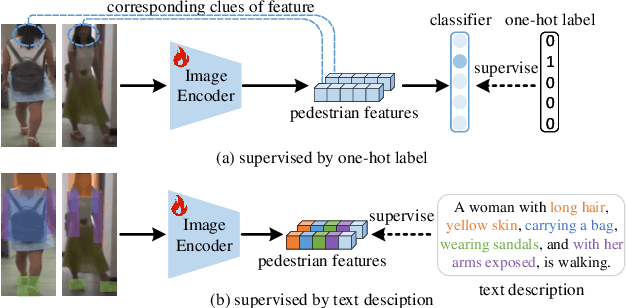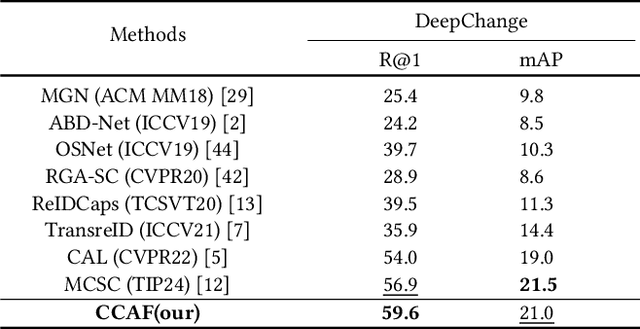Ji Gan
Beyond Euclidean: Dual-Space Representation Learning for Weakly Supervised Video Violence Detection
Sep 28, 2024



Abstract:While numerous Video Violence Detection (VVD) methods have focused on representation learning in Euclidean space, they struggle to learn sufficiently discriminative features, leading to weaknesses in recognizing normal events that are visually similar to violent events (\emph{i.e.}, ambiguous violence). In contrast, hyperbolic representation learning, renowned for its ability to model hierarchical and complex relationships between events, has the potential to amplify the discrimination between visually similar events. Inspired by these, we develop a novel Dual-Space Representation Learning (DSRL) method for weakly supervised VVD to utilize the strength of both Euclidean and hyperbolic geometries, capturing the visual features of events while also exploring the intrinsic relations between events, thereby enhancing the discriminative capacity of the features. DSRL employs a novel information aggregation strategy to progressively learn event context in hyperbolic spaces, which selects aggregation nodes through layer-sensitive hyperbolic association degrees constrained by hyperbolic Dirichlet energy. Furthermore, DSRL attempts to break the cyber-balkanization of different spaces, utilizing cross-space attention to facilitate information interactions between Euclidean and hyperbolic space to capture better discriminative features for final violence detection. Comprehensive experiments demonstrate the effectiveness of our proposed DSRL.
CLIP-Driven Cloth-Agnostic Feature Learning for Cloth-Changing Person Re-Identification
Jun 13, 2024



Abstract:Contrastive Language-Image Pre-Training (CLIP) has shown impressive performance in short-term Person Re-Identification (ReID) due to its ability to extract high-level semantic features of pedestrians, yet its direct application to Cloth-Changing Person Re-Identification (CC-ReID) faces challenges due to CLIP's image encoder overly focusing on clothes clues. To address this, we propose a novel framework called CLIP-Driven Cloth-Agnostic Feature Learning (CCAF) for CC-ReID. Accordingly, two modules were custom-designed: the Invariant Feature Prompting (IFP) and the Clothes Feature Minimization (CFM). These modules guide the model to extract cloth-agnostic features positively and attenuate clothes-related features negatively. Specifically, IFP is designed to extract fine-grained semantic features unrelated to clothes from the raw image, guided by the cloth-agnostic text prompts. This module first covers the clothes in the raw image at the pixel level to obtain the shielding image and then utilizes CLIP's knowledge to generate cloth-agnostic text prompts. Subsequently, it aligns the raw image-text and the raw image-shielding image in the feature space, emphasizing discriminative clues related to identity but unrelated to clothes. Furthermore, CFM is designed to examine and weaken the image encoder's ability to extract clothes features. It first generates text prompts corresponding to clothes pixels. Then, guided by these clothes text prompts, it iteratively examines and disentangles clothes features from pedestrian features, ultimately retaining inherent discriminative features. Extensive experiments have demonstrated the effectiveness of the proposed CCAF, achieving new state-of-the-art performance on several popular CC-ReID benchmarks without any additional inference time.
Shape-centered Representation Learning for Visible-Infrared Person Re-identification
Oct 30, 2023Abstract:Current Visible-Infrared Person Re-Identification (VI-ReID) methods prioritize extracting distinguishing appearance features, ignoring the natural resistance of body shape against modality changes. Initially, we gauged the discriminative potential of shapes by a straightforward concatenation of shape and appearance features. However, two unresolved issues persist in the utilization of shape features. One pertains to the dependence on auxiliary models for shape feature extraction in the inference phase, along with the errors in generated infrared shapes due to the intrinsic modality disparity. The other issue involves the inadequately explored correlation between shape and appearance features. To tackle the aforementioned challenges, we propose the Shape-centered Representation Learning framework (ScRL), which focuses on learning shape features and appearance features associated with shapes. Specifically, we devise the Shape Feature Propagation (SFP), facilitating direct extraction of shape features from original images with minimal complexity costs during inference. To restitute inaccuracies in infrared body shapes at the feature level, we present the Infrared Shape Restitution (ISR). Furthermore, to acquire appearance features related to shape, we design the Appearance Feature Enhancement (AFE), which accentuates identity-related features while suppressing identity-unrelated features guided by shape features. Extensive experiments are conducted to validate the effectiveness of the proposed ScRL. Achieving remarkable results, the Rank-1 (mAP) accuracy attains 76.1%, 71.2%, 92.4% (72.6%, 52.9%, 86.7%) on the SYSU-MM01, HITSZ-VCM, RegDB datasets respectively, outperforming existing state-of-the-art methods.
Query-adaptive DETR for Crowded Pedestrian Detection
Oct 24, 2023Abstract:DEtection TRansformer (DETR) and its variants (DETRs) have been successfully applied to crowded pedestrian detection, which achieved promising performance. However, we find that, in different degrees of crowded scenes, the number of DETRs' queries must be adjusted manually, otherwise, the performance would degrade to varying degrees. In this paper, we first analyze the two current query generation methods and summarize four guidelines for designing the adaptive query generation method. Then, we propose Rank-based Adaptive Query Generation (RAQG) to alleviate the problem. Specifically, we design a rank prediction head that can predict the rank of the lowest confidence positive training sample produced by the encoder. Based on the predicted rank, we design an adaptive selection method that can adaptively select coarse detection results produced by the encoder to generate queries. Moreover, to train the rank prediction head better, we propose Soft Gradient L1 Loss. The gradient of Soft Gradient L1 Loss is continuous, which can describe the relationship between the loss value and the updated value of model parameters granularly. Our method is simple and effective, which can be plugged into any DETRs to make it query-adaptive in theory. The experimental results on Crowdhuman dataset and Citypersons dataset show that our method can adaptively generate queries for DETRs and achieve competitive results. Especially, our method achieves state-of-the-art 39.4% MR on Crowdhuman dataset.
Characters as Graphs: Recognizing Online Handwritten Chinese Characters via Spatial Graph Convolutional Network
Apr 20, 2020



Abstract:Chinese is one of the most widely used languages in the world, yet online handwritten Chinese character recognition (OLHCCR) remains challenging. To recognize Chinese characters, one popular choice is to adopt the 2D convolutional neural network (2D-CNN) on the extracted feature images, and another one is to employ the recurrent neural network (RNN) or 1D-CNN on the time-series features. Instead of viewing characters as either static images or temporal trajectories, here we propose to represent characters as geometric graphs, retaining both spatial structures and temporal orders. Accordingly, we propose a novel spatial graph convolution network (SGCN) to effectively classify those character graphs for the first time. Specifically, our SGCN incorporates the local neighbourhood information via spatial graph convolutions and further learns the global shape properties with a hierarchical residual structure. Experiments on IAHCC-UCAS2016, ICDAR-2013, and UNIPEN datasets demonstrate that the SGCN can achieve comparable recognition performance with the state-of-the-art methods for character recognition.
 Add to Chrome
Add to Chrome Add to Firefox
Add to Firefox Add to Edge
Add to Edge